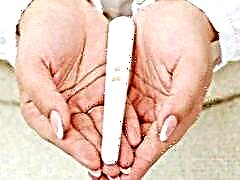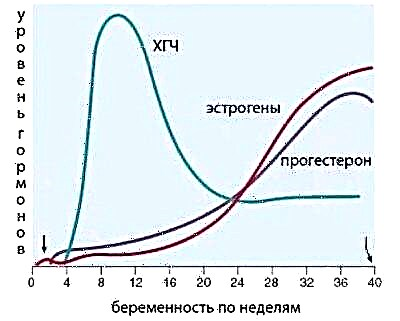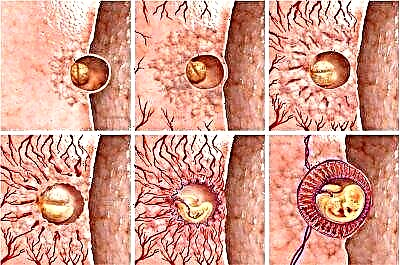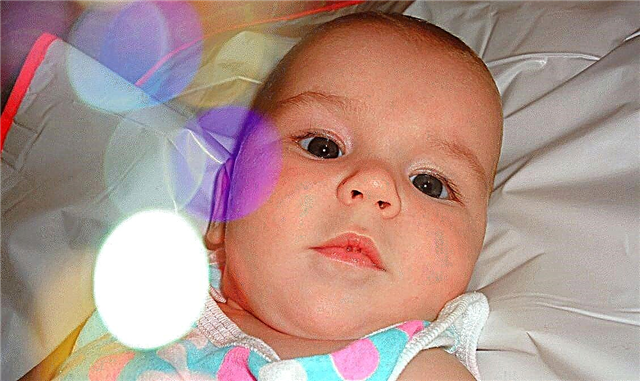
Women who measure their basal temperature, not only without tests, can determine the time of the onset of ovulation in their cycle, but they can also guess before others that conception has taken place. And the BT schedule will help them in this, which in the "pregnant" cycle is strikingly different from other charts. What should be the basal temperature during pregnancy in the earliest stages before the delay, this article will tell.
BT - what is it and how to measure it?
Basal temperature, by definition, existing in medicine, is the lowest temperature of the human body, which can be recorded only at the moment of rest. When we are active and mobile, our internal body temperature always rises. And in women, the level of base temperature still depends not only on activity, but also on the day of the cycle, because on different days the cyclical work of the female body is determined by completely different hormones.
It has long been noticed that during ovulation in women, there is a jump in basal temperature... This is the basis of the symptothermal fertility recognition method, which allows women to see exactly when a mature egg is released from the follicle, which means the highest probability of conception.

In the first half of the cycle, estrogen and FSH "rule" in a woman's body. The action of these hormones leads to the maturation of the follicle. And a surge in LH the day before ovulation, followed by a decrease in estrogen, leads to a characteristic jump in internal temperature. After ovulation, a corpus luteum is formed at the site of the follicle, which produces progesterone. And under the influence of this hormone, the basal temperature rises and remains so for almost the entire second half of the cycle.
If pregnancy does not occur, the corpus luteum dies 10-12 days after its formation, the concentration of progesterone decreases, the basal temperature decreases and menstruation begins. If conception did occur, then after the successful implantation of the embryo into the wall of the uterus, the production of the hCG hormone begins, which prevents the corpus luteum from ceasing to exist and function, progesterone remains high, the basal temperature does not decrease.

That is why the BT measurement method is considered informative not only for determining ovulation, but also for the earliest diagnosis of pregnancy, as well as various gynecological pathologies and endocrine disorders.
To determine pregnancy on a basal temperature chart, it is very important to take a correct measurement. Any mistakes in this process will lead to incorrect readings of the true temperature, the woman will be misled. Therefore, when planning conception, it is necessary to learn important rules that will help to obtain accurate data. Let's denote these rules.
You cannot measure basal temperature under the arm. It is imperative to fix it in those parts of the body that are in close proximity to the cavities, communicate with them. This is the mouth, vagina, rectum. Having chosen one part of the body, always measure only in it, do not change the location of the thermometer.
Choose a good thermometer that works well... Better - mercury, since mercury devices are more accurate than electronic ones. For measurements in the oral cavity, a special thermometer is required. In the rectum and vagina, you can use the most common thermometer.
BT should be measured in the morning at the same time every day. In the evening and in the afternoon, it is always increased, since we are active. And in the morning after waking up, for some time, the body still adapts to wakefulness and provides the thermometer with the most accurate readings of the temperature of internal organs.
Do not make movements, do not get out of bed. When you wake up, immediately start measuring while lying down. In the evening, put the thermometer at arm's length, shake it off in advance.
Thermometer injected by 2-3 centimeters for 5-7 minutes.
The best time to take measurements is from 5 to 7 am, but take into account the personal daily routine, because before the measurement, a woman should spend at least 6 hours in a dream, without getting up anywhere.

A rise in temperature can be affected by severe stress, a cold or viral illness, any inflammation, fatigue, travel, intercourse that took place the night before, alcohol drunk the day before. Under such circumstances, BT will inevitably rise, so a woman may misinterpret her schedule at the end of the cycle.
The temperature is included in the schedule, measurements are not stopped even during the next menstruation. You can download the graph on the Internet or draw it yourself - this is not so important.
"Pregnant schedule" - what does it look like?
Of course, the BT schedule will only allow us to assume a possible pregnancy, but it will in no way be able to accurately answer the question of whether conception took place or not. Although sometimes women planning a pregnancy are very happy with such a hint. Take a close look at the cycle chart. To talk about the likelihood of pregnancy, it is important to see the day of ovulation on itto be sure that the release of the egg, as a prerequisite for conception, has taken place.

Most often, this day falls in the middle of the cycle, before it there is a decrease in temperature, and then immediately its rise. This "peak" visually divides your cycle into two phases and looks like a bird's beak with outstretched wings. Before the "beak" the temperature was in the range of 36.2-36.9 degrees, on the day of ovulation - above 37 degrees.
The second half of the cycle takes place at an elevated temperature, but this is not a sign of pregnancy, but just a sure sign of the action of progesterone. It is produced in all women, regardless of whether conception has occurred or not. During the first week after ovulation, on average, your temperature, both during pregnancy and without it, will be 0.4-0.6 degrees higher than in the first phase.
7-9 days after ovulation, the embryo is implanted, if conception was. The physiological and biological meaning of what is happening is the attachment of the ovum to the inner layer of the uterus - the endometrium. On the day of implantation, a fairly common curious phenomenon is often observed - implantation dropping of basal temperature. It may decrease slightly and rise again the next day. But such a decrease is not at all necessary. It depends on the woman's personal level of progesterone.

If the implantation was successful, the corpus luteum does not regress under the influence of hCG, but continues to regularly supply the female body with shock doses of progesterone, so the basal temperature remains high. A decrease in 2-3 days before menstruation, which is observed by non-pregnant women in the phase of regression of the corpus luteum, will not be in a pregnant woman - all days before the delay in menstruation, BT will remain elevated (above 37 degrees).
It is this sign that should prompt an attentive woman that an "interesting position" is very likely.
Other chart options - reasons
If in the second half of your cycle the thermometry shows an increase in BT up to 38 degrees and above, do not rush to rejoice, because. this does not mean, alas, pregnancy. This means that a woman has a serious and strong inflammatory process in her body, and therefore it is necessary to consult a doctor as soon as possible for examination. Most often, this temperature accompanies gynecological problems of an inflammatory and infectious nature.
Therefore, pay attention to discharge, pain. If the discharge is atypical, there is pain, the state of health leaves much to be desired, you need to go to the doctor. A sharp jump in temperature up to 38 degrees 6-8 days after ovulation may indicate an ectopic pregnancy.

Decreased thermometry in the second half of the cycle (36.5 - 36.9 degrees) suggests that the corpus luteum produces an insufficient amount of progesterone. In this case, even a pregnancy that has begun can be suddenly interrupted at any time, since progesterone deficiency threatens a miscarriage or a frozen pregnancy at the earliest possible date. In addition, one should be sure to consult a doctor.
In most cases, the situation can be corrected by starting to take progesterone drugs as directed by the doctor.
Based on the results of measurements, a woman could get a graph in which there is an increase in temperature in the second half of the cycle, but very insignificant - by 0.2-0.3 degrees, no more. In this case, one should suspect endocrine disorders, often age-related. After all, after 30 years, the production of sex hormones is significantly reduced. In such cycles, it is difficult to conceive a baby, and if this succeeds, then pregnancy is often accompanied by a threat at the earliest possible date.

A monotonous graph, in which it is sometimes impossible to clearly distinguish changes in BT up or down, indicates an anovulatory cycle. There was no ovulation in it, and therefore you should not expect pregnancy - in the absence of a mature egg, conception is impossible. A chaotic graph with large peaks and troughs, the “royal” range of the curve indicates that gross errors were made in the measurement, so the graph itself does not reflect reality. And also such graphs are a sign of severe hormonal disorders, most often with them the onset of pregnancy is not possible.
The graph with a high temperature in the first half of the cycle does not even require further analysis of the increase or decrease, because it speaks of an initial violation of the hormonal background during the maturation of the follicles. Such schedules do not promise normal ovulation, usually such cycles when the rectal or vaginal temperature after menstruation is at marks above 37 degrees - anovulatory, in which conception is impossible.

Accuracy and margin for error
How accurate the BT graphs are is not as easy to answer as it seems. If a woman does everything correctly, follows all the measurement rules, then the accuracy will be quite high. But for determining pregnancy, this method is not suitable as reliable.
The most that can be done after the temperature does not drop on the 11-13th day after ovulation is to wait a few more days and buy a pregnancy test - after the delay, its accuracy is quite high. In addition, a couple of days before the delay in menstruation, you can do a blood test for hCG - during pregnancy, the level of chorionic gonadotropin will already exceed the norm.
Body temperature does not play a big role in the early diagnosis of pregnancy. But it has long been noticed that after implantation (in the last week before the delay), pregnant women have temperature rises up to 37 degrees and higher, especially in the afternoon and in the evenings. It seems that it is a cold, but the next morning the body temperature returns to normal.

A great help for those planning a pregnancy are the charts of other women with examples and explanations, which the ladies share on social networks and on thematic forums on the Internet. According to reviews, BT is not a panacea and a way to diagnose a pregnant condition, but a pleasant and useful hint. The longer a woman practices measurements and builds graphs, the better she begins to understand her body, easily notices an unusual schedule, which ultimately turns out to be "special", ending not with a new page in the women's calendar, but with the first page in the calendar of the future mother.
For more information on measuring basal temperature in early pregnancy, see the following video.



